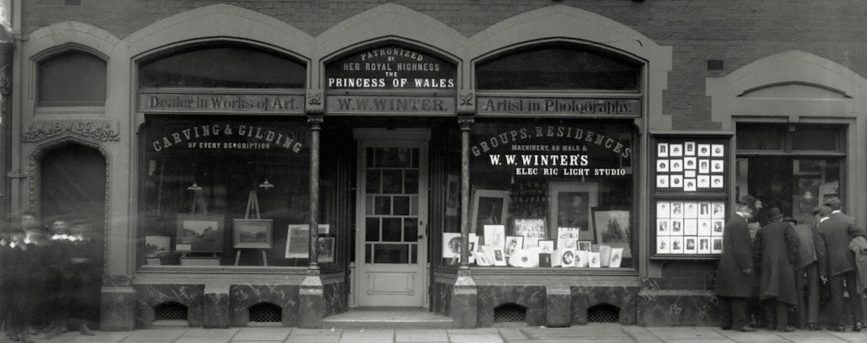This week Joanna’s blog really emphasizes the roller coaster nature of life. Winter’s starts the 1880 as a thriving business but soon experiences a huge setback:
The year of 1883 became a nightmare for Walter Winter. By this time his business was well established. The 1881 Census showed Walter and his wife Sarah were living at 2 Midland Road (the original studio) and that he was an employer of 10 men and 7 women. He had opened a department in the shop next door but one, for the sale of American Gem Portraits and the area was developing as a major thoroughfare with the coming of the horse trams in 1880.
On 4 June 1883 a fire broke out in the workroom – the top room of the building standing across the end of the yard. The Derby Mercury reported the details. Between one and two o’clock a quantity of carbon had been placed in the sun to dry and had spontaneously caught fire. A passing policeman saw the smoke and raised the alarm at the studio and the local police station across the road in Bloomfield Street and the central police office. The fire spread rapidly to the 3 storey premises to the right hand side of the yard. The staff together with the local police fought the fire with a hand hose until the arrival of the local Litchurch and Midland Fire Brigade together with the Central Fire Brigade. The Chief Constable was in attendance and the fire engine from the Midland Station was brought in. The fire was fought from the yard and from the London Road stone yard which backed onto the premises. The end of the 3 storey building was gutted. Hoses were laid across the street and traffic was severely disrupted.
Fortunately there were no casualties. The blacksmith’s shop at the far end of the yard belonging to Mr Charles Thompson was severely damaged. Mr Joseph Smith’s water bottling plant was damaged but most of the contents were saved. Damage amounting to some £500 (£42,500 today) occurred but it was reported that this was covered by insurance. By August Mr Winter had submitted a planning application to rebuild part of the premises followed by another application in 1887. Mr Thompson moved his business to London Road, and the bottling plant resumed business in the same place.
Sadly in September of that same year Sarah Winter died from the cancer she had been suffering from for some time. She was buried alongside her first husband Emmanuel Nicolas Charles in Nottingham Road Cemetery.
In spite of this the ‘phoenix rose from the ashes’. The premises were improved, business expanded, medals were won. Winter’s was on the ‘up’.
